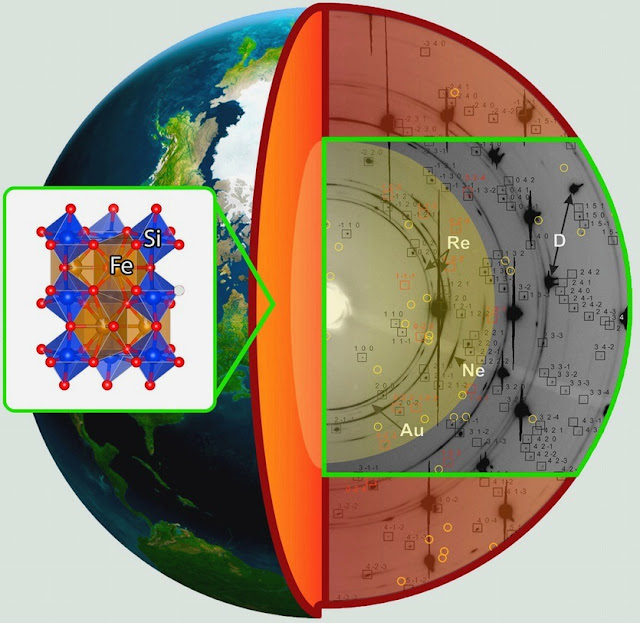Ironing out the mysteries of Earth’s deepest rocks
An experiment shows the mineral bridgmanite, thought to comprise the deepest mantle, is stable at those extremely high temperatures and pressures. Belinda Smith reports.
Ironing out the mysteries of Earth’s deepest rocks
We’d be toast without Earth’s magnetic field. Our protective shield deflects the solar wind, a stream of charged particles hurled from the sun. But the gurgling centre of the planet, which produces the magnetic field, is largely a mystery. What exactly is down there?
Scientists recreated the unimaginably crushing hot environment near the very centre of the planet to show a mineral – bridgmanite – is stable at such conditions. And if it does comprise the inner portion of the planet, this means it’s the most abundant mineral in Earth.
The work, published in Science Advances, could help geophysicists understand how Earth’s layers move and churn to produce our magnetic field.
Earth, over its 4.5-billion-year life, settled into layers: a solid iron inner core surrounded by a liquid iron outer core, which is sheathed in a thick layer of molten rock called the mantle and topped by the crust.
The mantle – being around 2,900 kilometres thick on average – can also be split into layers.
The lower mantle, which nudges the iron core, is believed to be mostly composed of a mineral called bridgmanite.
Bridgmanite is a silicate perovskite, and is named after American physicist Percy Bridgman, who won the 1946 Nobel Prize in physics for developing equipment to allow high-pressure research.
In 2014 the mineral was found in a “shocked” meteorite – that is, a meteorite that emulated the extreme temperatures and pressures of the deep Earth as it smashed into the planet.
But knowing how the mineral acts as it’s heated and squeezed is critical for understanding the structure and dynamics of our and other rocky planets.
One way to emulate these conditions in the lab is with laser-heated diamond anvil cells. A tiny sample is crushed between two diamonds and blasted with a laser.
Leyla Ismailova from the University of Bayreuth in Germany and colleagues squished several bridgmanite crystals, each with different compositions, at pressures more than 120 gigapascals and temperatures more than 3,000 kelvin.
And at those intense conditions, they fired X-rays at the samples. The X-rays bounced and scattered off the mineral’s atoms, producing a pattern from which scientists inferred the crystal’s atomic structure and if it was stable (or not).
They found bridgmanite is, indeed, stable at those temperatures and pressure.
But different amounts of iron in the bridgmanite produced different stabilities, which the researchers say could explain deep seismic activity and the dynamo effect that produces our magnetic field.
Published in Science Advances
